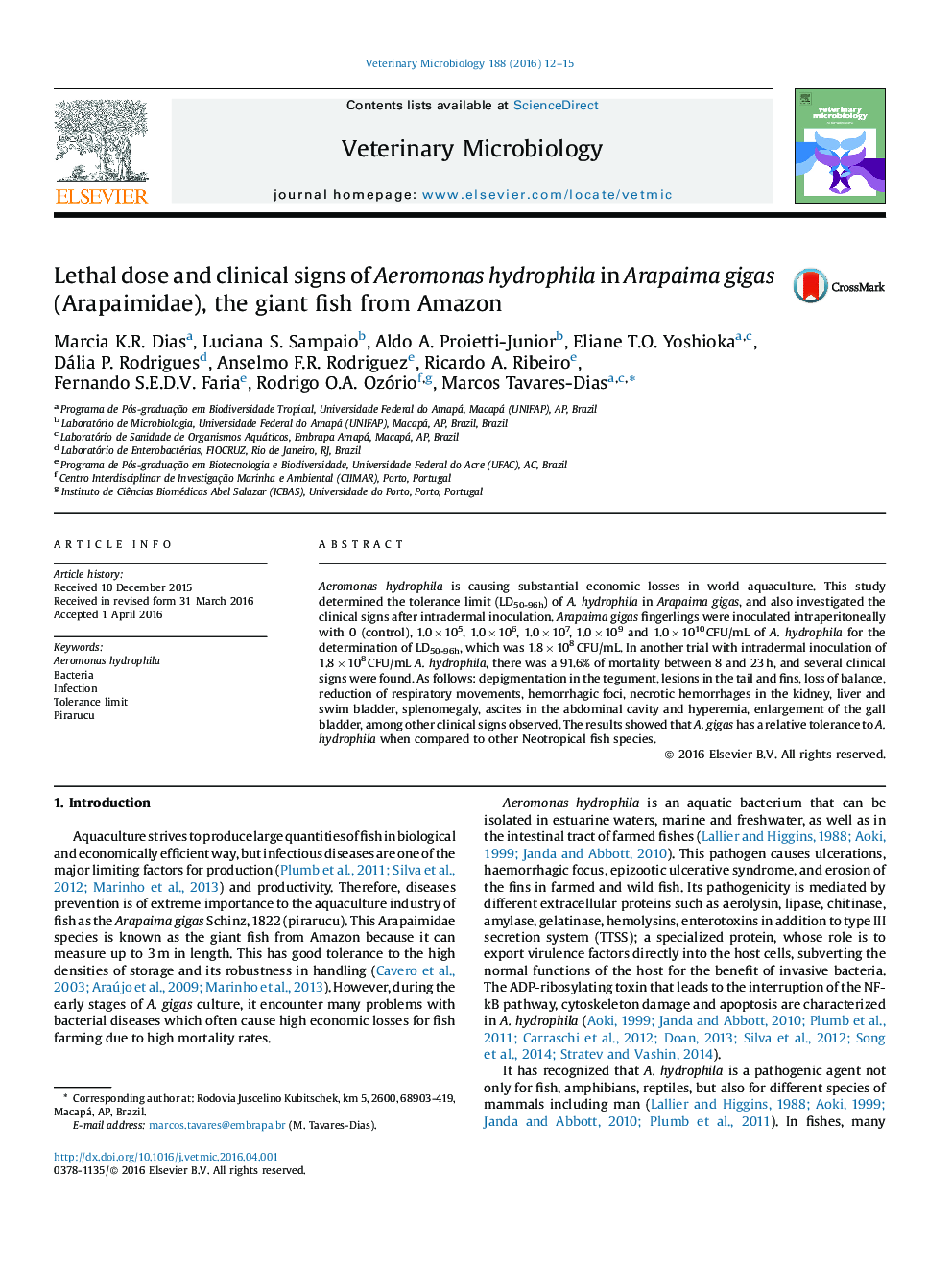| Article ID | Journal | Published Year | Pages | File Type |
|---|---|---|---|---|
| 2466456 | Veterinary Microbiology | 2016 | 4 Pages |
•Tolerance limit (LD) of Aeromonas hydrophila for Arapaima gigas was determined.•For A. gigas, the LD50-96h was of 1.8 × 108 CFU/mL.•The intradermal inoculation of 1.8 × 108 CFU/mL A. hydrophila caused 91.6% of mortality in fish and several clinical signs.•Fish had erratic movement, body abnormal coloration, hemorrhagic foci and abrasion of dorsal fin.•Fish had depigmentation in the tegument, body lesions, loss of balance, reduction of respiratory movements, hemorrhagic foci and necrotic hemorrhages.
Aeromonas hydrophila is causing substantial economic losses in world aquaculture. This study determined the tolerance limit (LD50-96h) of A. hydrophila in Arapaima gigas, and also investigated the clinical signs after intradermal inoculation. Arapaima gigas fingerlings were inoculated intraperitoneally with 0 (control), 1.0 × 105, 1.0 × 106, 1.0 × 107, 1.0 × 109 and 1.0 × 1010 CFU/mL of A. hydrophila for the determination of LD50-96h, which was 1.8 × 108 CFU/mL. In another trial with intradermal inoculation of 1.8 × 108 CFU/mL A. hydrophila, there was a 91.6% of mortality between 8 and 23 h, and several clinical signs were found. As follows: depigmentation in the tegument, lesions in the tail and fins, loss of balance, reduction of respiratory movements, hemorrhagic foci, necrotic hemorrhages in the kidney, liver and swim bladder, splenomegaly, ascites in the abdominal cavity and hyperemia, enlargement of the gall bladder, among other clinical signs observed. The results showed that A. gigas has a relative tolerance to A. hydrophila when compared to other Neotropical fish species.
